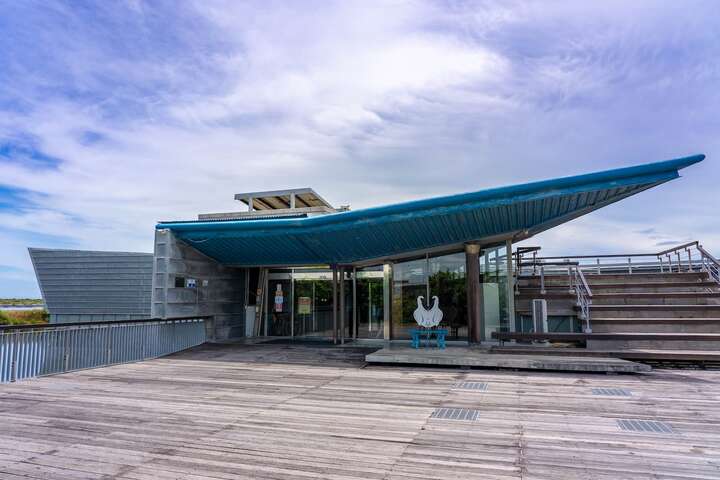Black-faced Spoonbill Ecology Exhibition Hall Introduction
The Black-faced Spoonbill Ecological Exhibition Center is located near the Black-faced Spoonbill Bird Watching Pavilion and its main habitat. The building is situated on water, and its unique design aims to avoid disrupting the natural ecology. Inside, there are exhibition areas that provide detailed information about the Black-faced Spoonbill, including its life history, wetland ecology, conservation efforts, and sustainable development. (This exhibition center is affiliated with the Biodiversity Research Institute of the Ministry of Agriculture.) The Black-faced Spoonbill is also known as the "Black-faced Dancer" and is listed as a critically endangered species. Currently, there is a stable population of Black-faced Spoonbills that migrate to the Jhongjheng River estuary in Tainan for wintering, arriving around September to October and staying until March to May of the following year. The Black-faced Spoonbills rest during the day and forage at night, typically starting their playful activities, bathing, or preening around 4 or 5 PM. If you are lucky, you might even witness the magnificent sight of a Black-faced Spoonbill taking flight. In addition to the well-known Black-faced Spoonbill, the Jhongjheng River estuary is home to around 200 species of migratory birds. In terms of migratory birds, winter is the best time to observe more species, with common sightings including gulls and sandpipers. Resident birds such as the spotted dove and the white-breasted waterhen are also frequently seen, making the area rich in avian resources.


































